Key Points Summary
- Web3 still struggles to achieve large-scale adoption. Meme coins have proven to attract public attention through their fun nature, but the speculation-driven hype quickly fades.
- Casual games are an effective vehicle for the popularization of new technologies. Gomble Games seamlessly integrates Web3 features into gameplay, quickly acquiring users through simple games like Eggdrop.
- A complete ecosystem has been built, including GOMBLE SQUAD, GOMBLE BUILDERS, and a token reward system, providing economic incentives for Web3 users and creating a zero-technical-threshold entry for Web2 users.
1. The Road to Web3 Popularization: Long and Challenging
Large-scale adoption has always been the core goal of the Web3 industry, but substantial user growth has yet to materialize. Technological advancements such as account abstraction and transaction acceleration have lowered some barriers but have not significantly increased the number of active users.
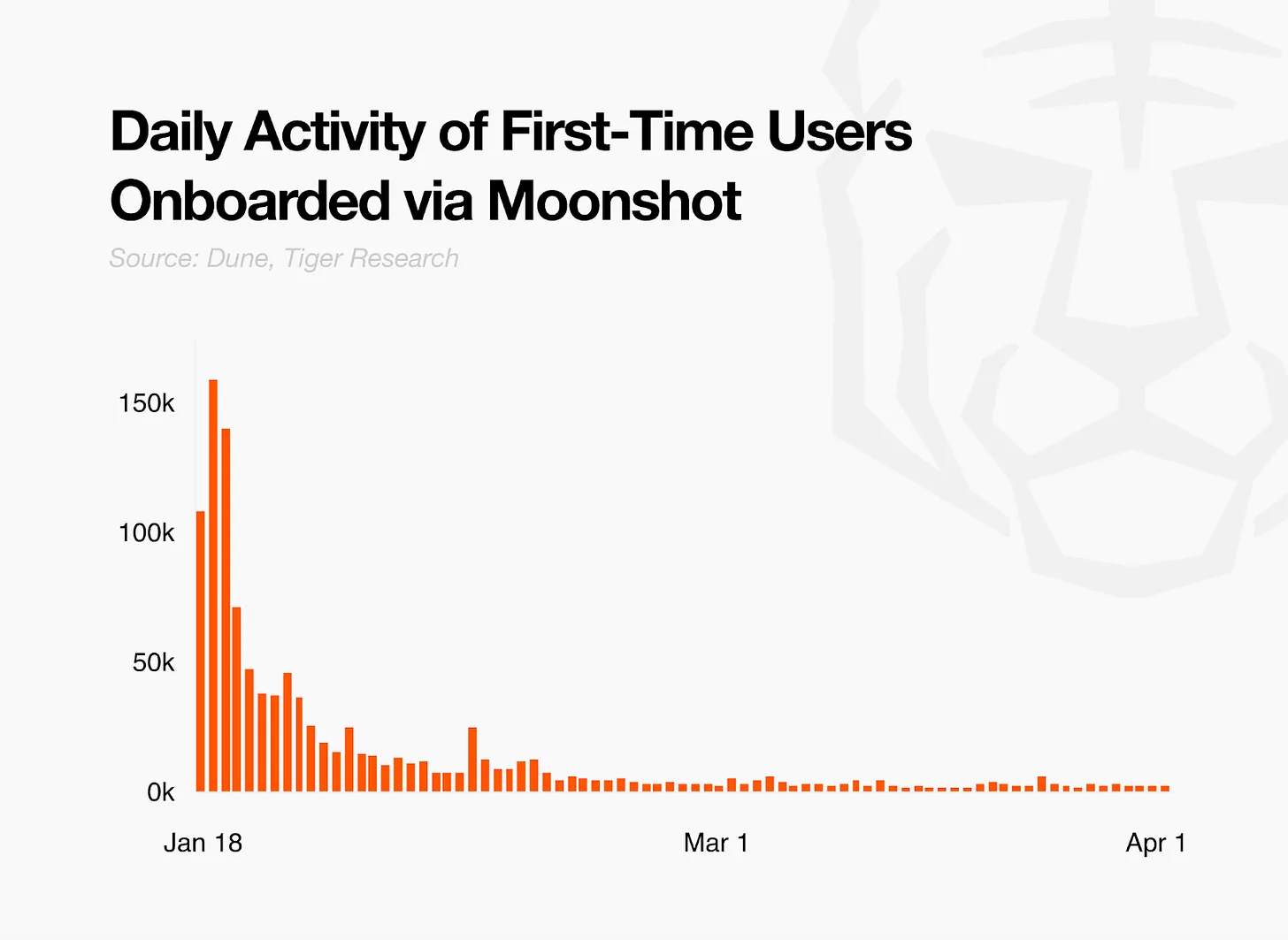
Recently, the meme coin craze represented by Chillguy and Trump briefly activated public interest, but on-chain data platform Moonshot shows that most $Trump investors suffered losses shortly after their initial purchase and exited—either passively holding or completely leaving the ecosystem. This speculative entry and rapid exit model contributes little to long-term growth and may even harm public perception.
To achieve true Web3 popularization, the industry's focus must shift to users' sustained value perception—beyond short-term financial gains, establishing a stable user base for ongoing participation.
2. Casual Games: A Bridge for New Technology Popularization
Games have always been a pioneering force in the popularization of new technologies. In the PC era, MUD games guided users to adapt to unfamiliar interfaces and network environments through engaging gameplay.

Source: "Fruit Ninja," "Temple Run," "Angry Birds"
In the smartphone era, intuitive casual games like "Fruit Ninja," "Temple Run," and "Angry Birds" attracted a broader and more diverse user base compared to MUD games of the PC era. These works became key catalysts for technology diffusion, guiding users to experience mobile features like touch screens and gyroscopes without complex explanations, achieving technology acceptance through enjoyable experiences.

Source: "Pokémon Go"
Augmented reality technology follows a similar path. "Pokémon Go" allows players to interact with digital characters in real-world settings, bringing AR into daily life without needing to understand the underlying technology. Casual games serve as "experience tutorials" for new technologies, simplifying complex systems and providing intuitive value, making them an effective tool for driving large-scale adoption.

This principle also applies to Web3. Casual games provide a low-friction entry into the ecosystem, with short durations and simple mechanics allowing users to explore Web3 with minimal risk. While meme coin trading offers similar ease of use, it is driven by speculation, with participants often seeking quick profits before exiting rapidly. On the other hand, hardcore Web3 games, despite their technical depth and rich content, have complex onboarding processes and lengthy gameplay that limit their appeal to the general public.
Casual games fill the gap, combining accessibility with sustained engagement, becoming a pragmatic path for large-scale Web3 adoption.
3. Gomble Games: Delivering Web3 Fun Through Casual Games
Gomble Games (GOMBLE) is leading the integration of Web3 and casual games. The company originated from the blockchain department of the Korean game studio 111 Percent, which has launched global hits like "Random Dice" and "Lucky Defense." Building on this foundation, GOMBLE aims to promote Web3 adoption through easily accessible and highly engaging gaming experiences.
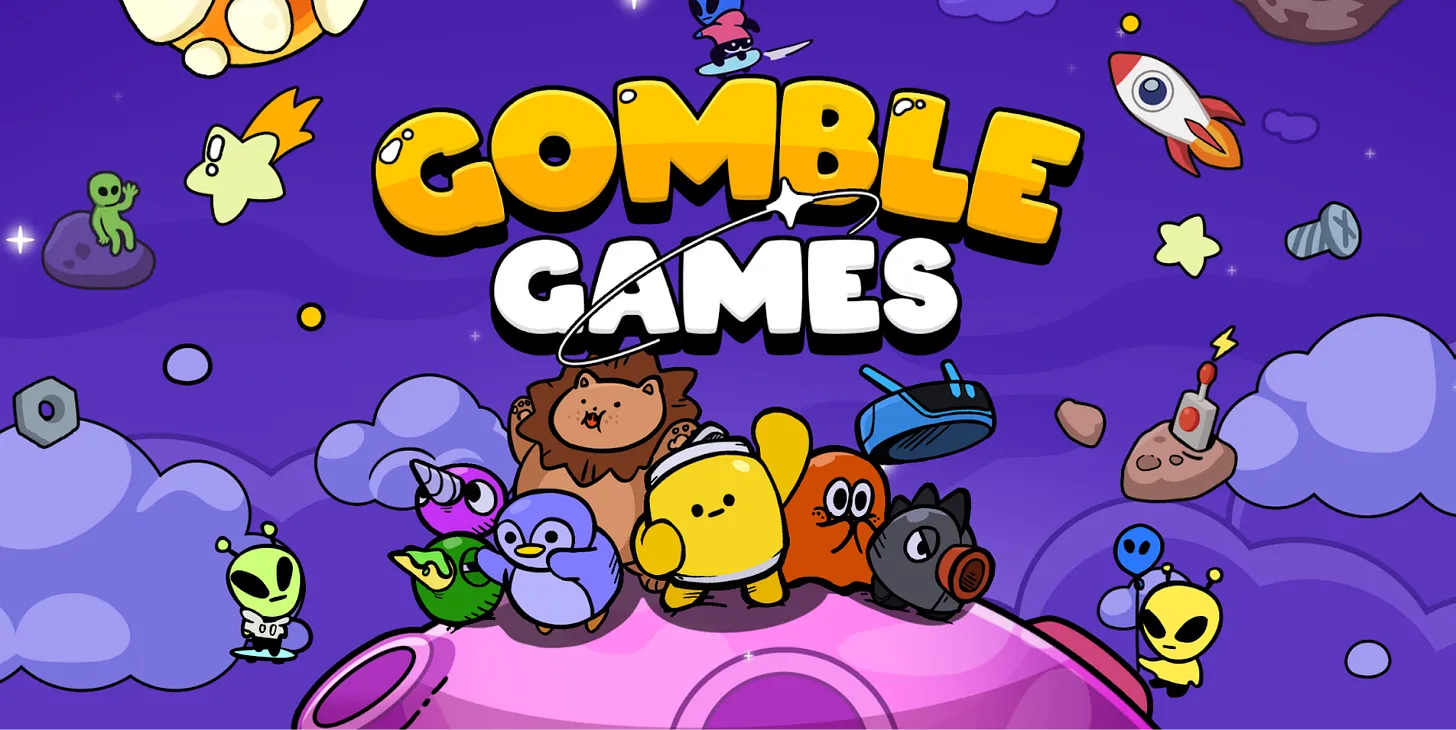
Source: Gomble Games
GOMBLE adheres to a core principle: delivering fun. Web3 features are integrated into gameplay in a way that does not disrupt the gaming experience, and this strategy has received strong market support. In 2024, GOMBLE completed over $10 million in funding from institutions such as YZi Labs (formerly Binance Labs), Spartan, and Hashed.
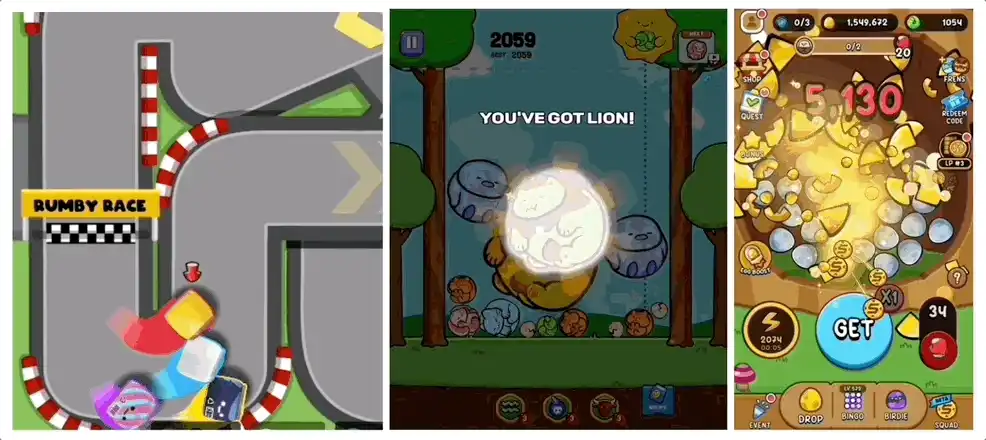
Source: Gomble Games
GOMBLE has proven its execution capabilities: in 2024, it launched casual games like "Merge Lion" and "Rumby Party," with its Telegram platform game Eggdrop attracting 300,000 users within two days of launch, rapidly surpassing 3 million monthly active users, achieving 600,000 daily active users with high retention rates. Players have highly praised the quality and overall experience of Eggdrop, showcasing outstanding gameplay and engagement advantages in Telegram games. Through Eggdrop, GOMBLE has demonstrated its ability to design high-performance, highly engaging games within the Web3 ecosystem.
4. Gomble's Advanced Strategy: From Game Development to Ecosystem Building
GOMBLE is going beyond game development to build a complete Web3 ecosystem. Its strategy achieves long-term engagement by connecting users, developers, and content holders, with a key focus on understanding the advantages and limitations of casual games—while lowering entry barriers, they often face challenges of short lifecycles and high user churn rates. GOMBLE leverages Web3 technology to create value outside of games, transforming short-term gaming behavior into long-term relationships.
This model is akin to designing a theater's backstage system and managing a troupe to ensure a continuous output of successful productions. To realize this vision, the company operates: 1) a social gaming center, GOMBLE SQUAD; 2) a developer platform, GOMBLE BUILDERS; 3) a native token, $GM. The three work together to build a sustainable Web3 ecosystem, realizing the vision of user co-creation of content and shared rewards.
4.1 Social Gaming Center: GOMBLE SQUAD

Source: GOMBLE SQUAD
This module introduces a team mechanism of up to 10 people, enhancing social attributes through collaborative tasks, team rankings, and reward sharing. Analogous to team sports, it transforms individual gaming into collective achievements, increasing participation duration through collective rewards.
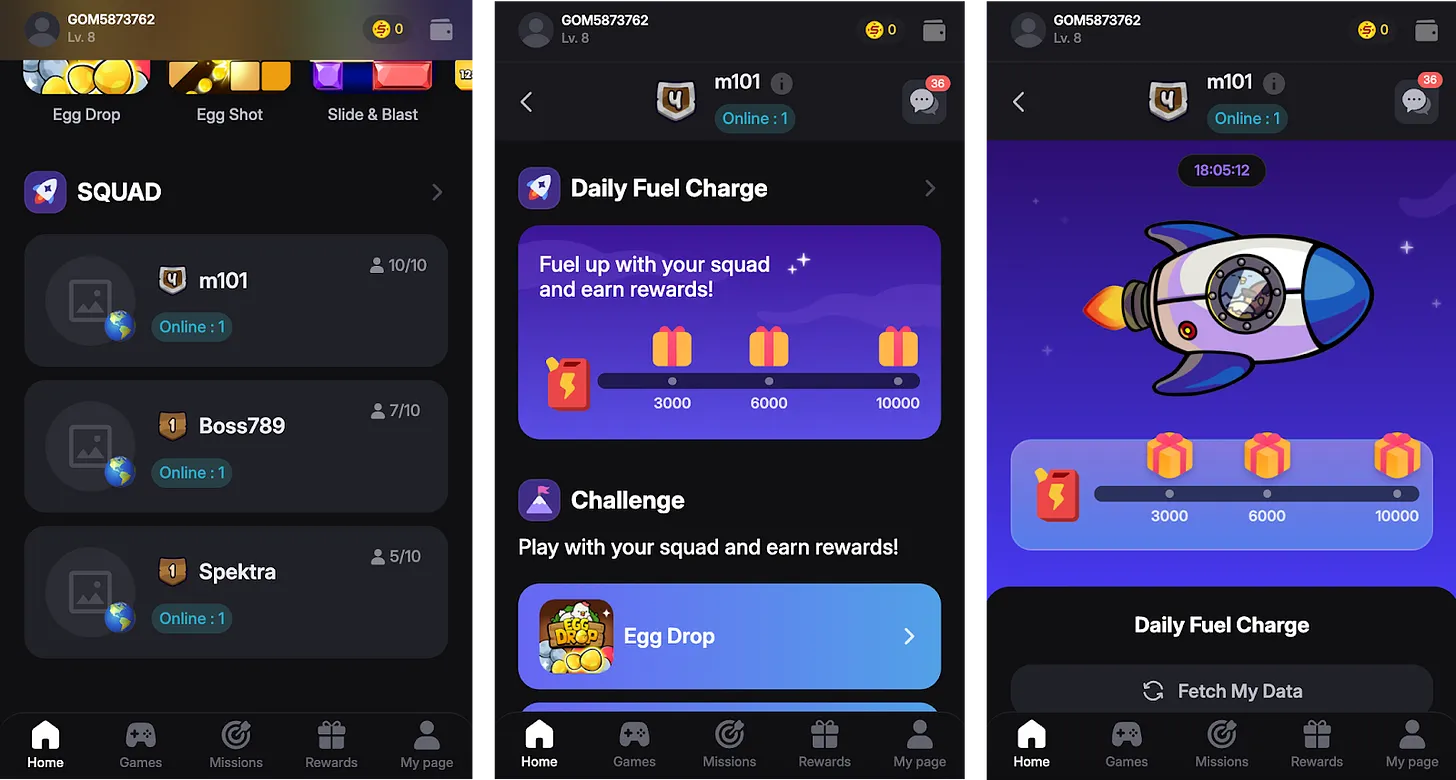
Based on Telegram, the GOMBLE SQUAD interface, Source: Gomble Games
During the testing phase, the Telegram version of GOMBLE SQUAD demonstrated strong appeal: users formed nearly 50,000 teams, generating over 560,000 interactions. After applying team tasks in Eggdrop, the average daily retention rate based on one week of data increased by 7%, and competitive elements like leaderboards led to an average increase of about 6.7 times in spending by paying users.
GOMBLE achieves on-chain expansion through the "Proof of Squad (PoSQ)" mechanism. Unlike traditional Web3 metrics that emphasize individual transactions or asset holdings, PoSQ serves as a new type of social data record that verifies team interactions, allowing developers to obtain socially driven user data, while players can verify contributions at the team level, supporting transparent reward distribution based on collective performance.
GOMBLE plans to expand this system through a native mobile application, extending from game mechanics to a rewards center that connects digital and real-world activities. While specific features have yet to be disclosed, the collaborative framework has opened new possibilities—such as a "team marathon" that integrates members' steps or location-based team check-in challenges.
Through this model, GOMBLE aims to create intuitive entry points for both Web3 native users and the general public, driving large-scale adoption through low-friction mechanisms.
4.2 User-Driven Development Platform: GOMBLE BUILDERS
This platform allows users to directly participate in game development and earn rewards, specifically designed for casual games with short development cycles and simple mechanics, aligning with community-driven iterative experimentation.
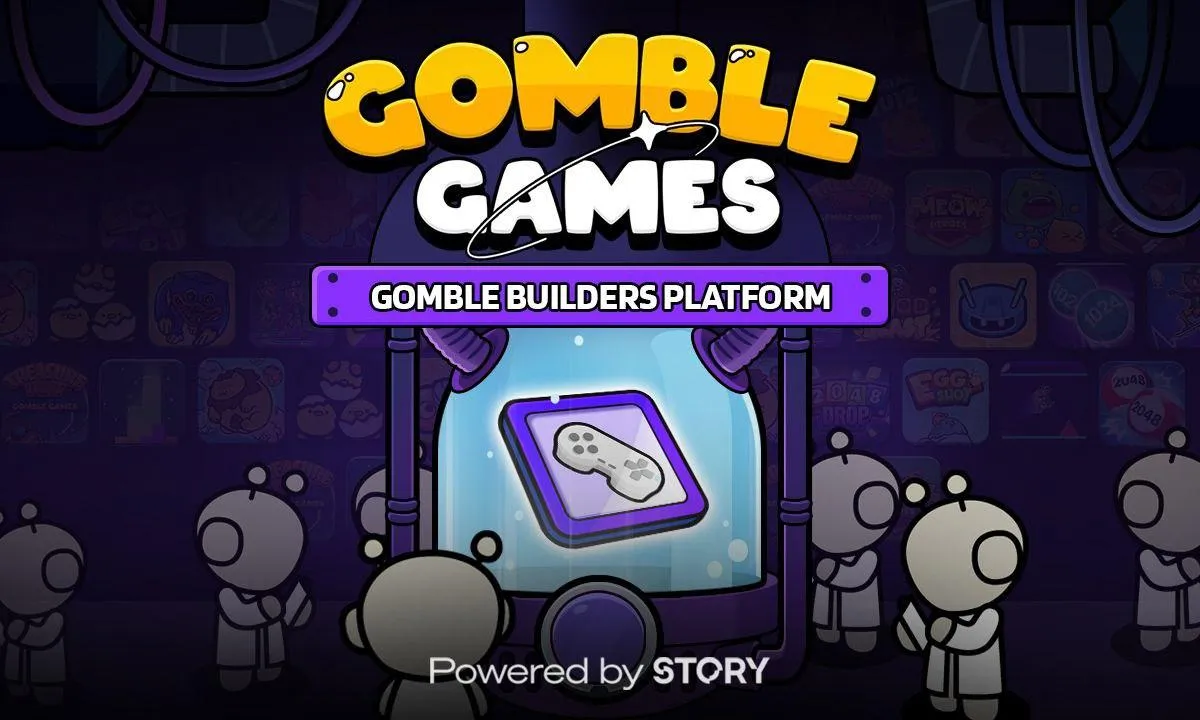
Source: Gomble Games
Based on casual game development experience, GOMBLE has built a system where user feedback directly influences game design. The first phase of the experiment will introduce IP content selected by community voting, having already partnered with the blockchain IP protocol Story.
For example: Pudgy Penguin NFT holders can propose character skin IPs, and after community voting approval, GOMBLE will adapt the visuals and add them as game assets. Revenue from paid content will be shared with NFT holders, and both proposal submitters and voting users will receive rewards.
GOMBLE plans to expand Builders' functionality, with future updates introducing tools that support user participation in game creation and monetization. By opening development to the community, GOMBLE aims to extend the lifecycle of casual games while enhancing the diversity of creativity within the genre.
4.3 Incentive-Driven Flywheel: GOMBLE Token Economy
Rewards are not the endpoint of the user journey but the starting point. Rewards stimulate initial participation and convert it into sustained activity and contributions, with blockchain technology making this model more reliable and measurable—transparently recording and verifying each action.
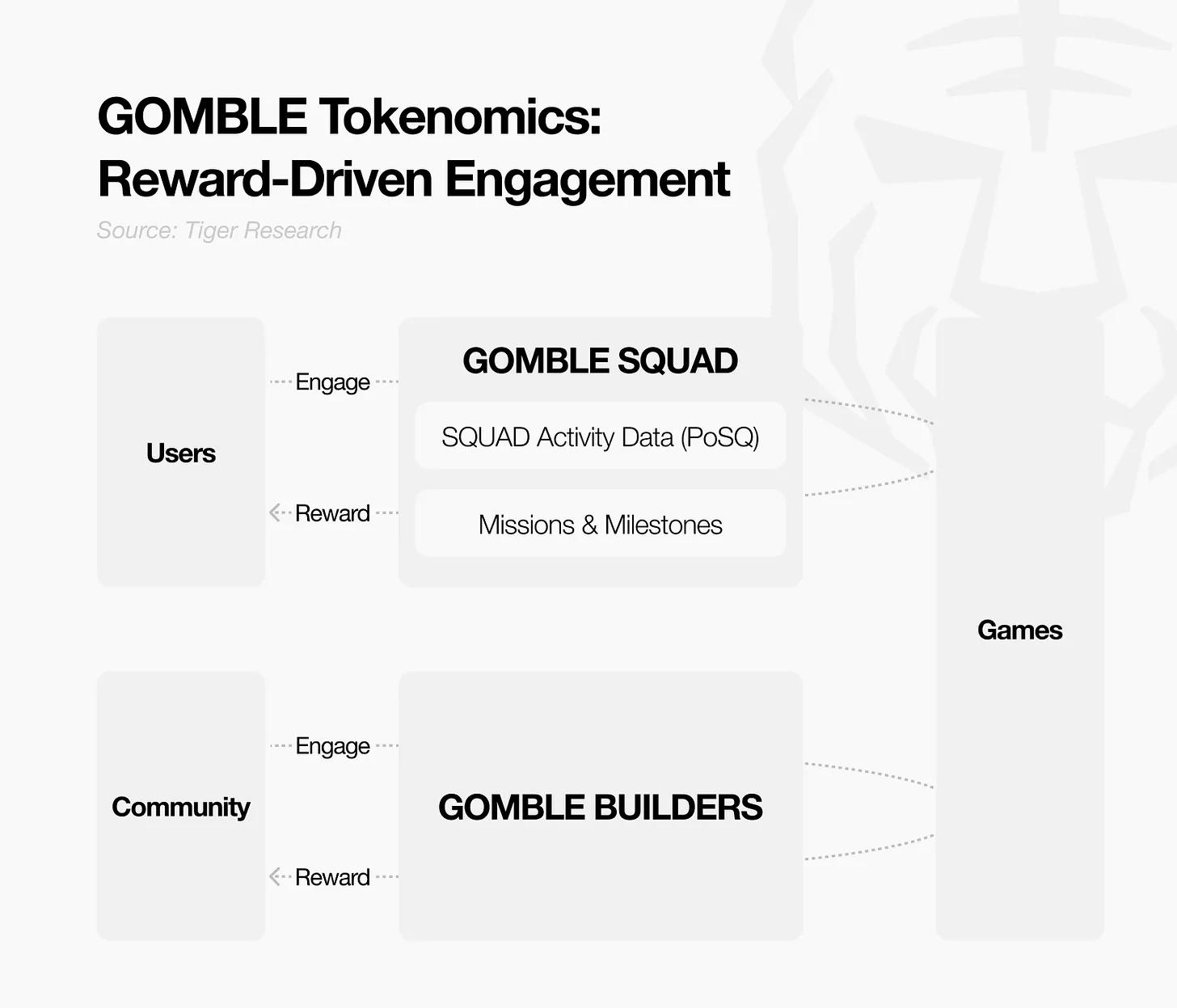
GOMBLE designs a token economy that connects players, developers, and the community: Players earn tokens through gameplay, and on-chain records generate high-quality user data; developers can accurately target users, optimize operations, and deliver personalized rewards based on this data. This feedback loop is unfeasible in traditional gaming—data is fragmented by platforms like Google and Facebook, leading to limited insights for developers and rising marketing costs. GOMBLE disrupts this model by returning data ownership to developers and users, transforming it into a shared asset that drives participation.
GOMBLE also rewards community contributions. In traditional ecosystems, players providing feedback receive little to no compensation, while the platform monopolizes the value. GOMBLE changes this dynamic by directly rewarding contributors with tokens, establishing a clearly aligned incentive and sustainable participation structure. This model inherits the precedents set by the "StarCraft" map editor and Steam Workshop but achieves transparency, ownership, and structured upgrades through Web3. GOMBLE not only invites users to play but also invites them to co-build the ecosystem and share in the value.
5. Gomble's Challenges and Adoption Potential
In the early days of smartphones, casual games helped the public become familiar with mobile technology, with their simple and intuitive gameplay lowering the learning curve and accelerating the development of application ecosystems. GOMBLE is now committed to replicating this path in the Web3 space.
The team has demonstrated execution capabilities in the casual gaming sector: during LaunchPool, they attracted over 2 million new users through Telegram squads in just two weeks. However, initial results are not enough to guarantee success; the continuous output of "fun games" is the key to success. The parent studio, 111 Percent, achieved a qualitative leap with hits like "Random Dice," and GOMBLE similarly needs a phenomenal game to support its token economic structure.
Unlike the traditional model that relies on a single product, GOMBLE, as an ecosystem builder, collaborates with external developers, studios, and Web3 projects to expand its influence and enhance the probability of breakthrough success. This collaborative strategy strengthens long-term prospects.
Casual games remain the most pragmatic tool for achieving large-scale Web3 adoption. History has shown that games bring new technologies to mainstream users through intuitive experiences, and GOMBLE now stands at the intersection of gaming and Web3—if successful, it could spark a new wave of popularization driven by gaming fun rather than speculation.
免责声明:本文章仅代表作者个人观点,不代表本平台的立场和观点。本文章仅供信息分享,不构成对任何人的任何投资建议。用户与作者之间的任何争议,与本平台无关。如网页中刊载的文章或图片涉及侵权,请提供相关的权利证明和身份证明发送邮件到support@aicoin.com,本平台相关工作人员将会进行核查。




